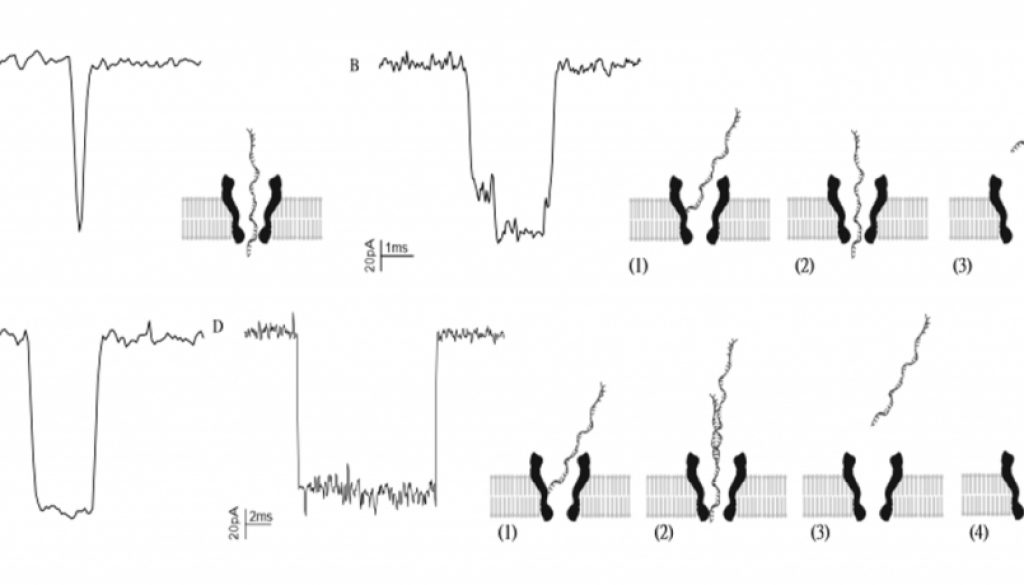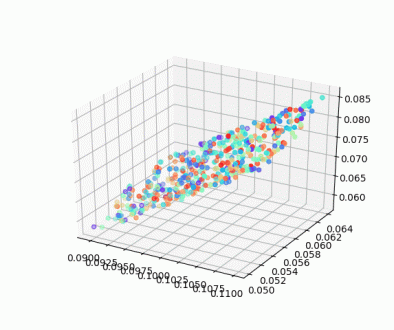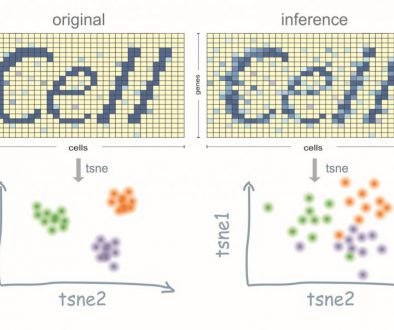Nanopore, 3rd generation sequence
The third generation sequencing works by reading the nucleotide sequences at the single molecule level, read the whole sequence at a time. This is different from second generation sequencing which reads out each base in a sequence by synthesis. To this end, the third generation sequencing technology transform the “shape variation” to “electric signal“ variation.
To say “shape variation”, you can understand it by imaging there is a stone in a brook, and you have a smart detector for water flow velocity or volume. Then, when the stone varies in their size and shape, the read out of the detector should change as well. Based on this information, you can back infer what kind of stone might be in the brook. In the 3rd generation sequencing, there is a channel (brook side/bank) that may formed by a protein or silicon, the electric current is like the water flow.
However, this is kinda idealism. In real word 3rd generation sequencing, you can only lower down your expectation and ask if I could distinguish 4 base signals (A, T, C, G). This sounds easier right? because right now you only have to tell difference from four significant varied patterns.

I’m sorry, the real case is still very complicated. The picture below (left) shows the how the signals looks like if you use a patch clamp on both sides of channel protein. ( you can apply different voltage to make the electronic flow faster or slower).
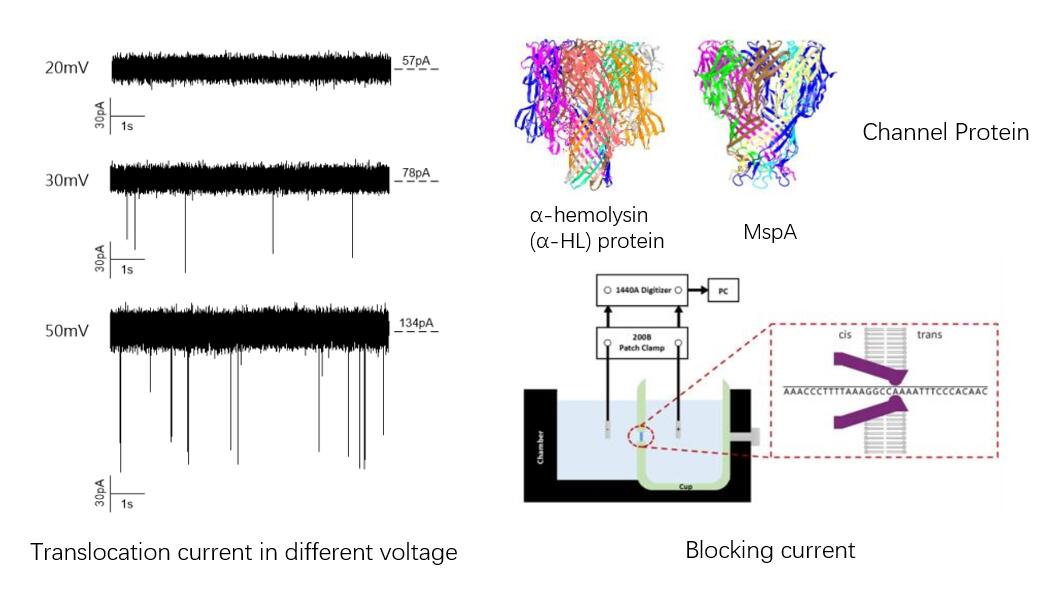 In our project, zooming in the spike signal, we can see a more complicated pattern. And the point of this project is actually realize there could be various thermal motion and translocation means which produce all kinds of patterns. The key point is, how to read them, explain them, and decompose them into something more informative.
In our project, zooming in the spike signal, we can see a more complicated pattern. And the point of this project is actually realize there could be various thermal motion and translocation means which produce all kinds of patterns. The key point is, how to read them, explain them, and decompose them into something more informative.
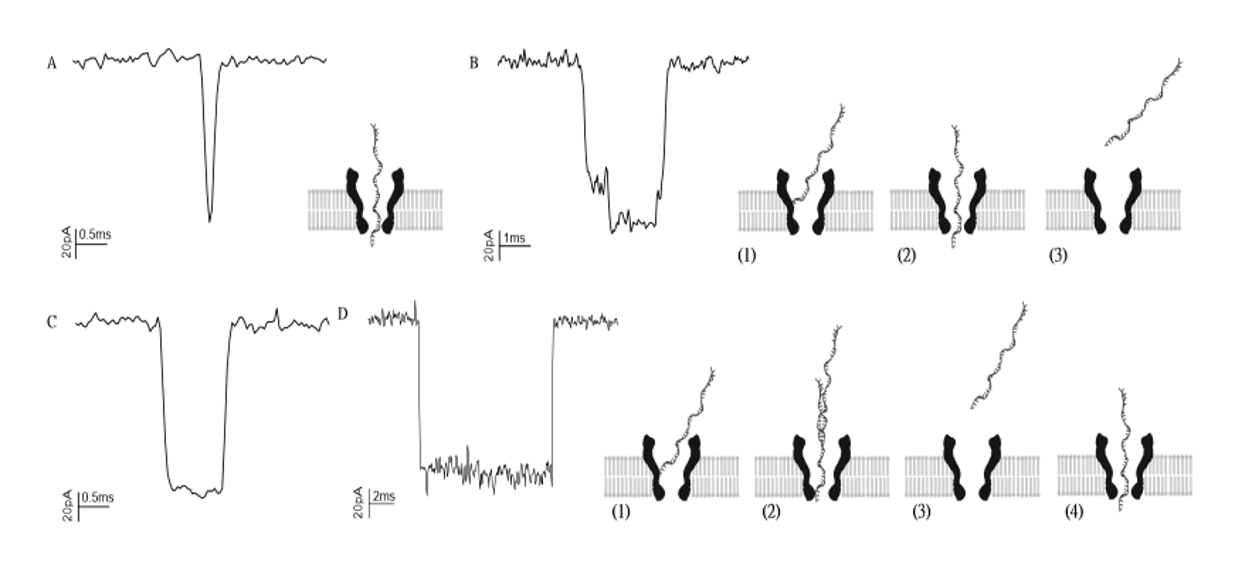 Even though there are many technical details that need to be improved, the 3rd sequencing techs especially some portable applications meet their great promise in the future. From long range structural variation to genome assembly, and in-clinic application which can reduce the artificial effects like sample transferring, sample degradation and so on. ( especially for single cell batch effects !!!)
Even though there are many technical details that need to be improved, the 3rd sequencing techs especially some portable applications meet their great promise in the future. From long range structural variation to genome assembly, and in-clinic application which can reduce the artificial effects like sample transferring, sample degradation and so on. ( especially for single cell batch effects !!!)
